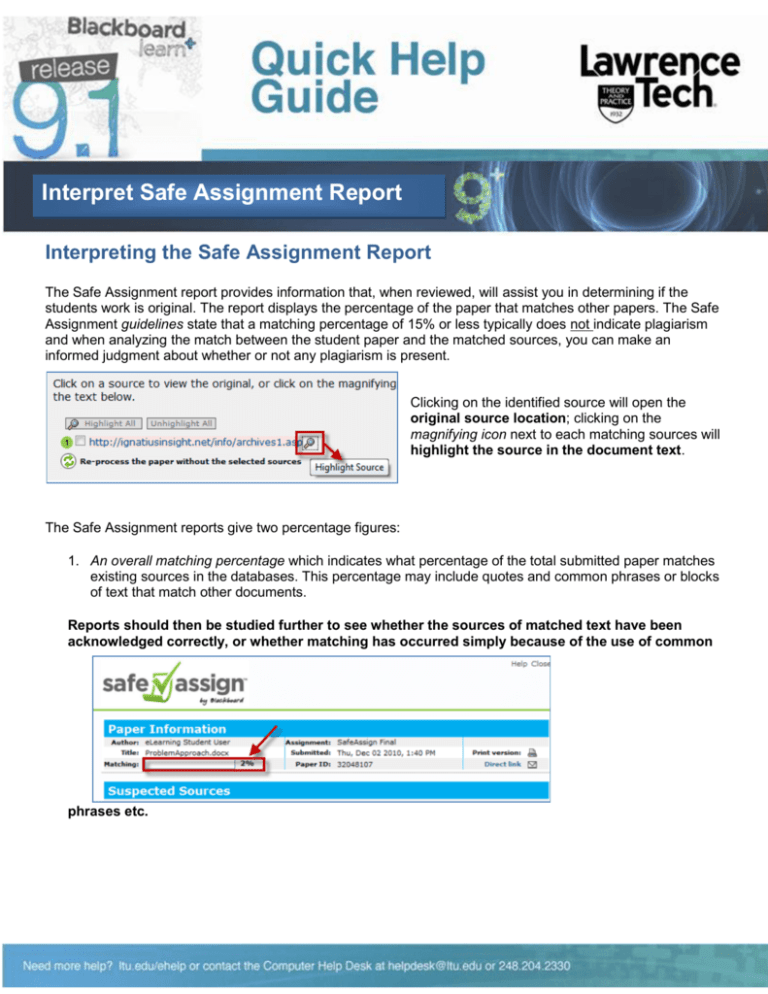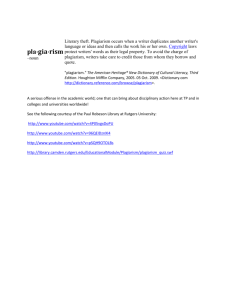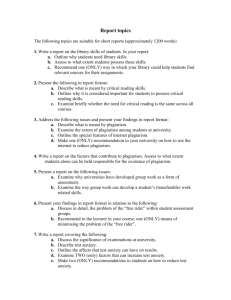Interpret Safe Assignment Report
advertisement

Interpret Safe Assignment Report Interpreting the Safe Assignment Report The Safe Assignment report provides information that, when reviewed, will assist you in determining if the students work is original. The report displays the percentage of the paper that matches other papers. The Safe Assignment guidelines state that a matching percentage of 15% or less typically does not indicate plagiarism and when analyzing the match between the student paper and the matched sources, you can make an informed judgment about whether or not any plagiarism is present. Clicking on the identified source will open the original source location; clicking on the magnifying icon next to each matching sources will highlight the source in the document text. The Safe Assignment reports give two percentage figures: 1. An overall matching percentage which indicates what percentage of the total submitted paper matches existing sources in the databases. This percentage may include quotes and common phrases or blocks of text that match other documents. Reports should then be studied further to see whether the sources of matched text have been acknowledged correctly, or whether matching has occurred simply because of the use of common phrases etc. Interpret Safe Assignment Report 2. A sentence matching percentage. Clicking on a sentence that has been identified as matching by Safe Assignment. A Source Comparison window opens up, showing the URL of the matching document, the percentage of similarity for that particular sentence, and a direct comparison of each sentence. All reports must be analyzed, as matched text may or may not constitute plagiarism. For example: • Text will be highlighted as matched but are a legitimate use of source material, provided they have been enclosed in quotation marks, their source has been acknowledged correctly. • Matching may occur if not paraphrased adequately, and the work too closely resembles another person’s work. • Sentences of a generic nature may be matched but it is unlikely that these will constitute plagiarism. Example: Several authors may write of a subject matter and use common phrases that may not constitute plagiarism. ‘Animal behavior is the scientific study of how and why animals behave’ General guidelines to consider when looking at the percentage of match are as follows: • Scores below 15% - These papers typically include some quotes and a few common phrases or blocks of text that match other sources. These papers shouldn’t require any further analysis as there is little evidence of possible plagiarism. • Scores between 15% - 40% - These papers include extensive quoted and paraphrased material or they may include plagiarism. These papers should be reviewed by faculty to determine if the matching content is properly attributed. • Scores over 40% - These papers present a high probability that the text was copied from other sources. These papers should definitely be reviewed for plagiarism.






